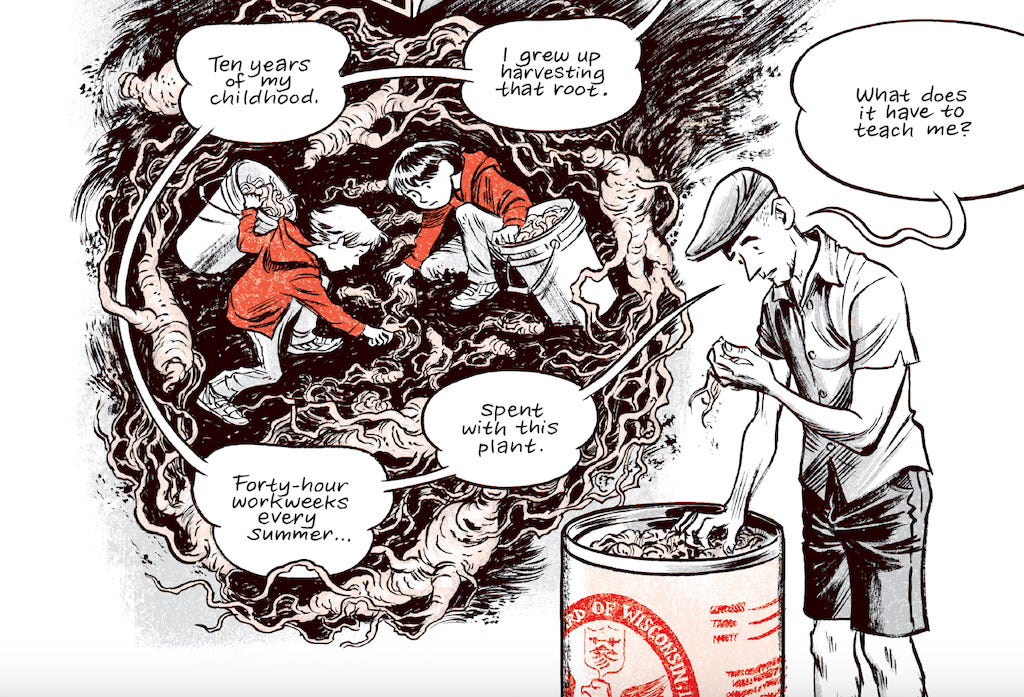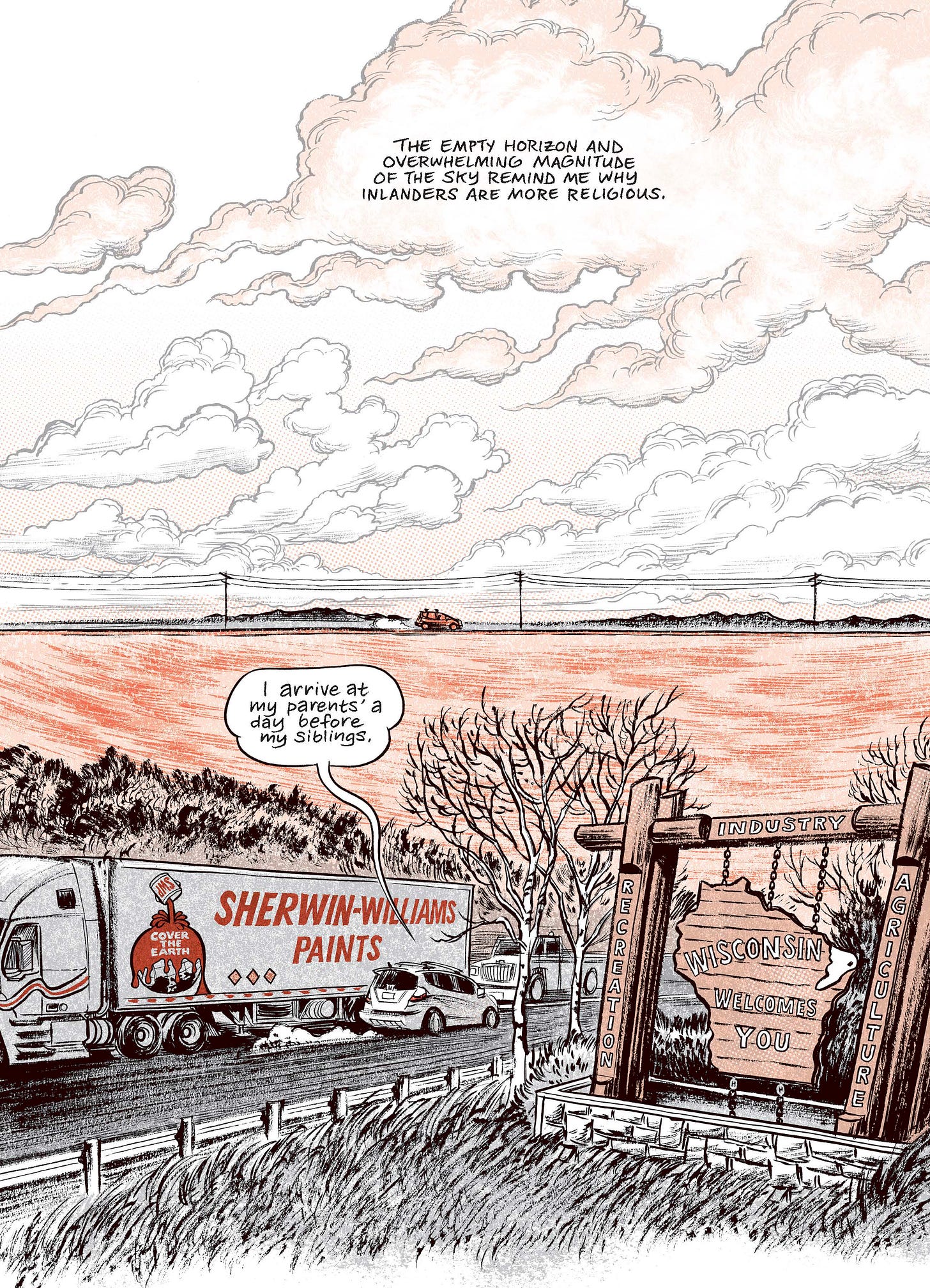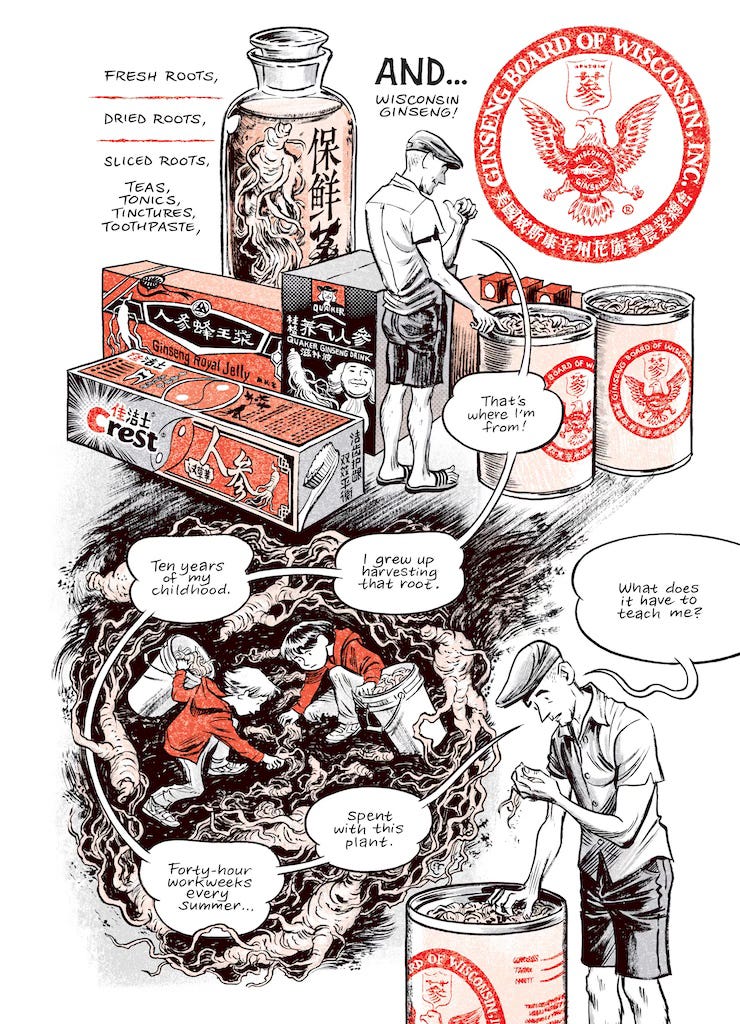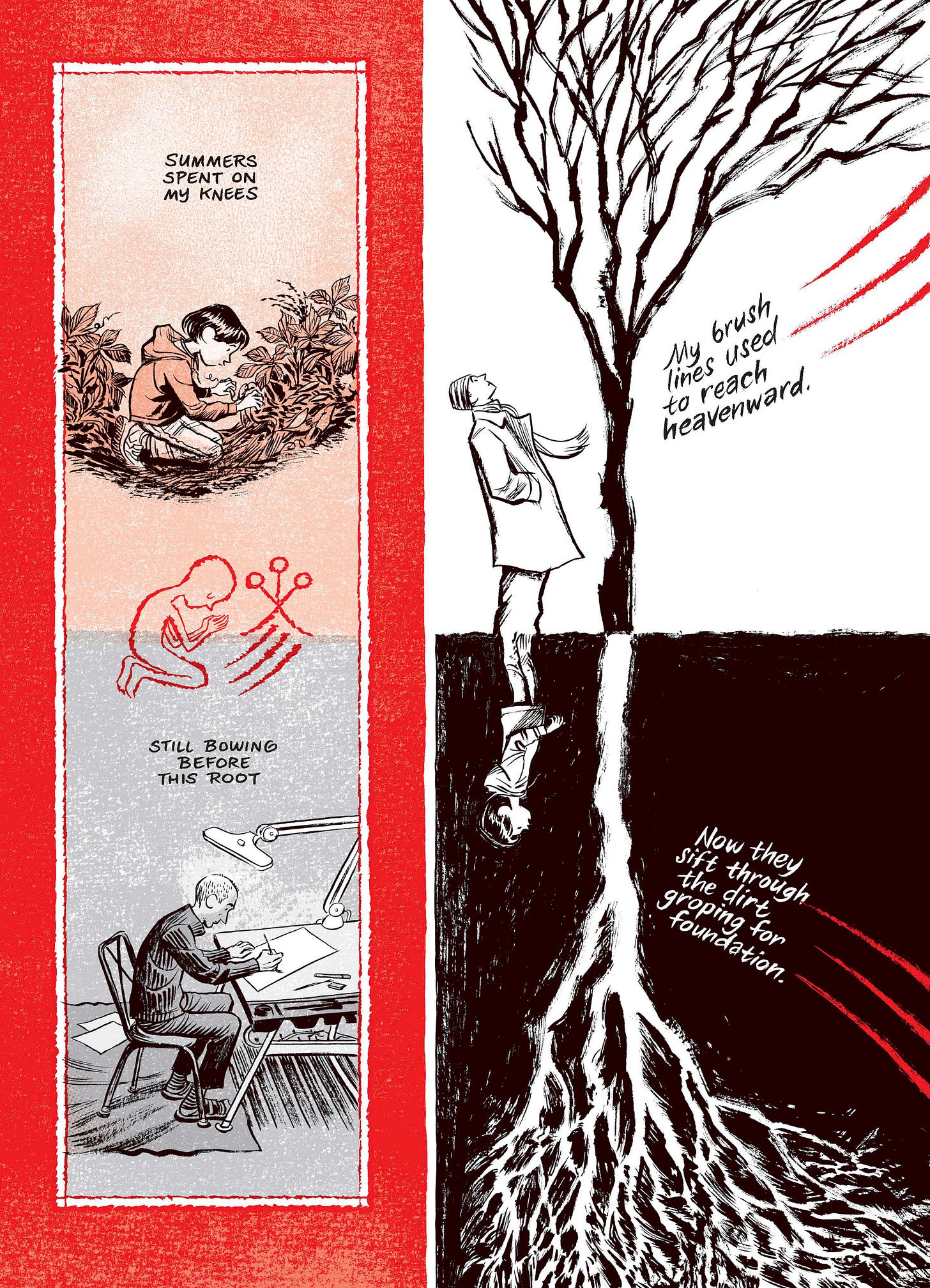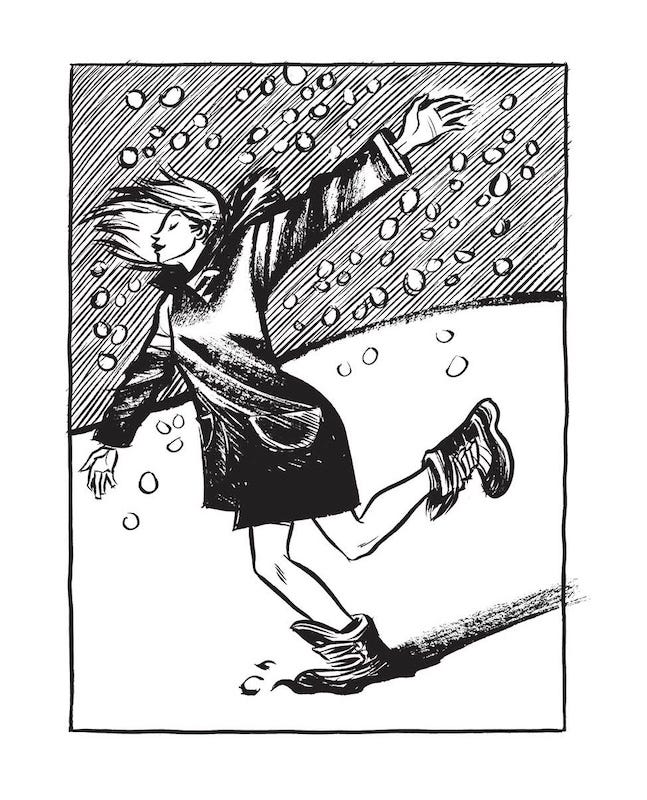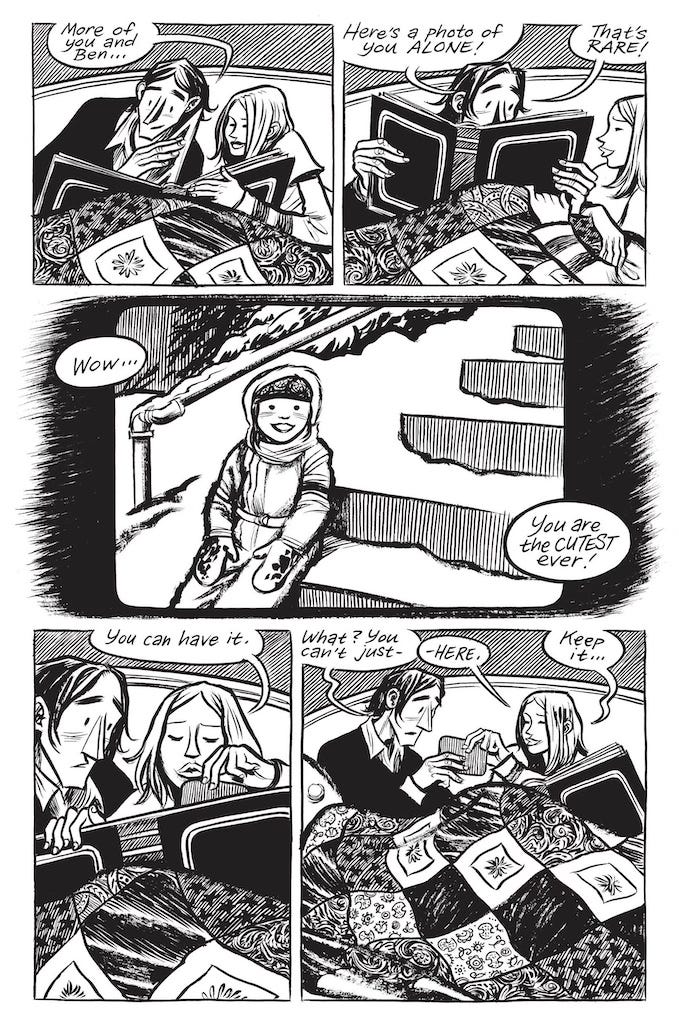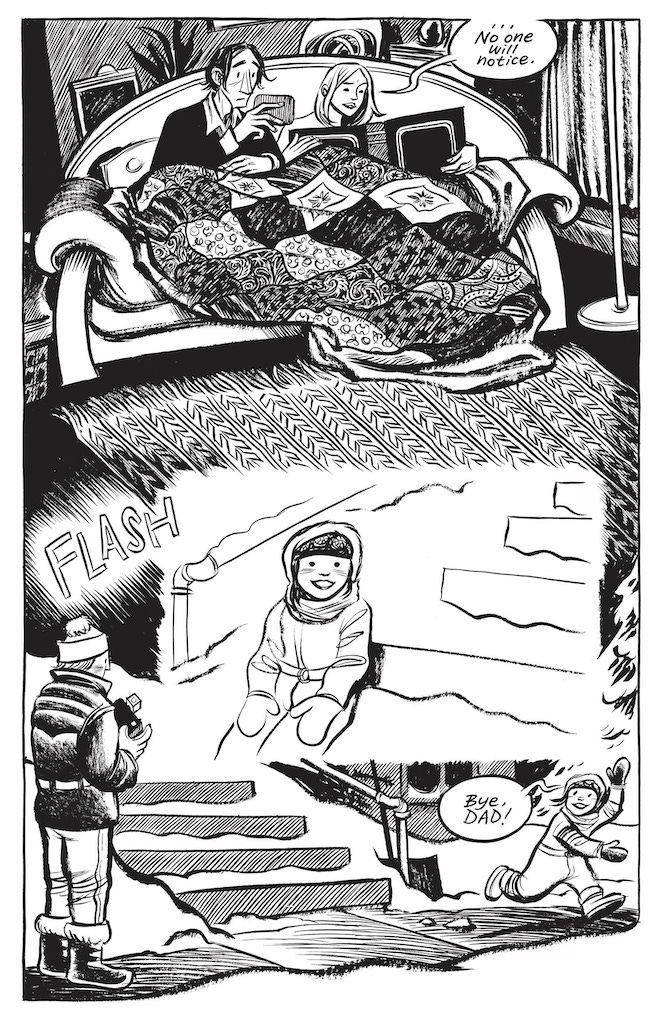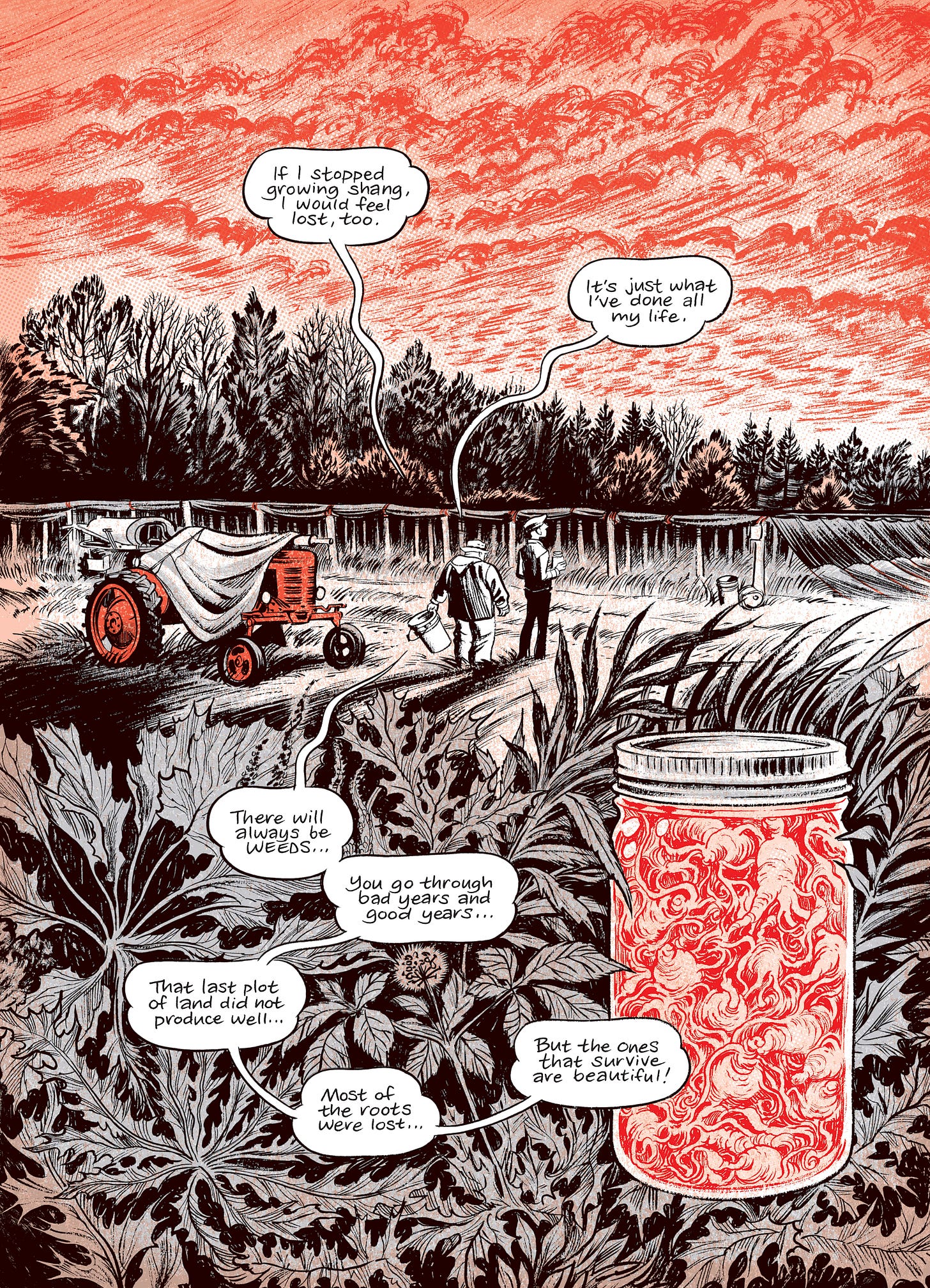Putting In Work
With Ginseng Roots, Craig Thompson delivers a brilliant meditation on work—what it gives us and what it takes
Last week, as my mother-in-law and I sat in her kitchen talking, we saw my father-in-law roll down the driveway in the big John Deere tractor. It’s a familiar image, watching him dig, haul, plow, dump. He’s a few months shy of his 89th birthday, long retired, but he’s never stopped working.
Later, when I asked what he’d been doing—moving dead trees from one part of the property to the other—he shrugged and said, “I make up work to do.”
He grew up in the country and prefers to be outside best. When you have a garden and a lawn and a barn, there’s always something to do.
Work—particularly physical labor—and how it defines our lives, is at the heart of Craig Thompson’s magisterial graphic memoir, Ginseng Roots. Originally a 12-comic series that ran from 2019 to 2024, this complete volume—published by Pantheon—is an ambitious saga that blends memoir, reportage, cultural criticism and social history.
Thompson, a cartoonist who has published five full-length books, including his most famous work, Blankets, the 2003 story of growing up in Wisconsin the child of evangelical Christians. He returns home a few decades later in Ginseng Roots and we discover the impact Blankets had on his family—including a sister who wasn’t a character in this first book but figures poignantly in this one.
“Nobody wants to work anymore.”
We also learn, in short order, about Marathon Wisconsin, the ginseng Mecca of the United States.
Who knew?
Thompson’s interest in ginseng goes beyond nostalgia, though—he’s seeking medical relief from physical pain. Thompson suffers from an aggressive form of an autoimmune disorder called Fibromatosis, which causes enormous—and degenerative—pain in the hands, the instrument without which he cannot work.
He’s faced with a life-altering reality.
And so, as the cutest little ginseng root advises him: “Go back to where you came from.”
As a child, Thompson didn’t have a choice but to work. Manual, farm labor. At times, it’s tough for him not to dismiss his professional career as an artist as trivial, not real work. But in page after gorgeously-designed-and-conceived page, you see that’s not that case at all.
There is nothing lazy or unremarkable about anything in this book.
Thompson explores the cost of physical labor, not just on the body but the mind and spirit. He and his siblings worked because they didn’t have a choice. Their parents worked as kids before them because they didn’t have a choice. What did they gain? What did they sacrifice?
Ginseng, it turns out, is demanding to grow. It takes diligence, patience and durability to harvest—qualities that are not easy to find. Who, after all, is up for that kind of painstaking labor?
Just this week a business owner in the Vermont town where I live told me, “Nobody wants to work anymore.” It’s a sentiment you hear often—it gets louder as you get older—and Thompson examines it with nuance and honesty.
This book is about many things—class, geo-politics, natural medicine, chronic illness, and an author grappling with his career and his family—but the part that lingers concerns work.
Just look at this gorgeousness:
I mean, that’s a page that deserves a standing ovation. You work a whole life to deliver a page like this. And Thompson’s got plenty more like it.
I grew up loving comic books. My mother is Belgian so along with American superheroes I idolized Gaston LaGaffe, Lucky Luke, and was well-versed in Asterix and Tintin. I went through a serious collecting phase in junior high—attending comic conventions at the Roosevelt Hotel in midtown Manhattan, getting my tattered comics signed by the likes of John Byrne, George Perez, Howard Chaykin, and Walt Simonson. I duly venerated Will Eisner.
But I never read comic books. I looked at the pictures. If the art didn’t appeal to me, I didn’t get far. I always envied people who lose themselves in the story of a comic.
I’ve continued to appreciate the form as an adult and have deep admiration for its practitioners. I still look at comics primarily for the pictures and almost never read them. Did I imagine a 447-page book about the ginseng industry would change that?
Dude, go figure but it did.
Reading Ginseng Roots is like watching a movie from a favorite director—you know you are in such good hands, the subject matter is almost secondary. In this case, all of Thompson’s storytelling technique and virtuosity is in service of the story—which at turns left me enlightened, despondent, enraged, amused, invigorated, and moved. And always engaged.
So then I just had to read Blankets—the memoir that put Thompson on the map—and I gobbled that up, too. Holy smokes, that book is charmed, no wonder it has such a following.
There’s a wonderful contrast between Ginseng Roots and Blankets—the first memoir is so full of yearning and tenderness. Thompson’s line is really strong and fluid and he boldly leaves plenty of white space on the page. The second book is more intricate but equally in command.
Looking at these two volumes on my shelf, you can’t get around their heft. They are substantial objects. I’m reminded of the effort—all the work—that went into making them.
Their existence is proof of Thompson’s dogged work ethic.
What about work that is less tangible?
Sometimes, I confuse work with productivity. Work can be listening—really listening—or showing restraint. Things that seem passive but, at least for me, prove the most strenuous work of all.
[Images from Ginseng Roots courtesy of Pantheon; images from Blankets courtesy of Drawn & Quarterly]


